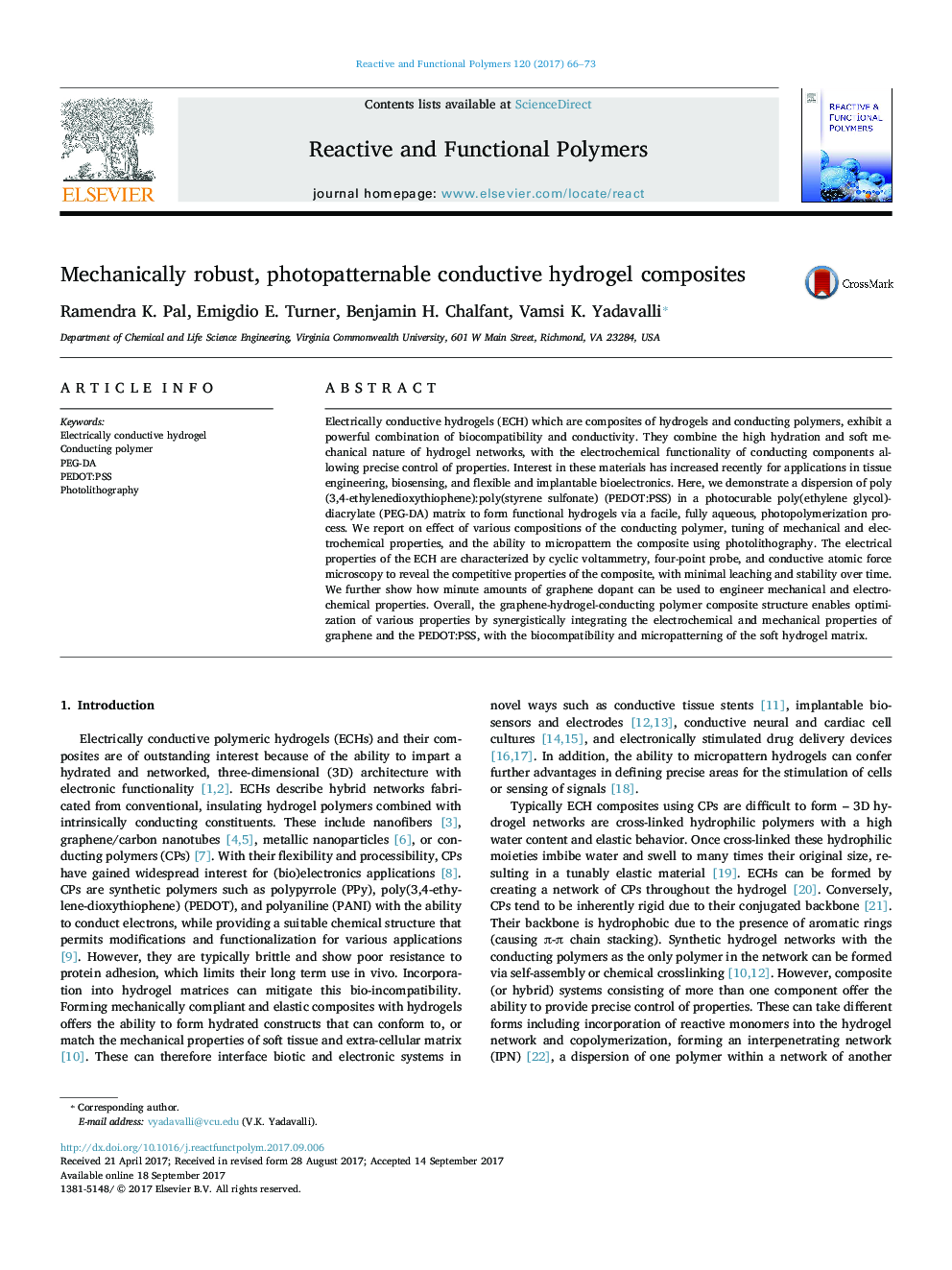| Article ID | Journal | Published Year | Pages | File Type |
|---|---|---|---|---|
| 5209245 | Reactive and Functional Polymers | 2017 | 8 Pages |
Abstract
Electrically conductive hydrogels (ECH) which are composites of hydrogels and conducting polymers, exhibit a powerful combination of biocompatibility and conductivity. They combine the high hydration and soft mechanical nature of hydrogel networks, with the electrochemical functionality of conducting components allowing precise control of properties. Interest in these materials has increased recently for applications in tissue engineering, biosensing, and flexible and implantable bioelectronics. Here, we demonstrate a dispersion of poly(3,4-ethylenedioxythiophene):poly(styrene sulfonate) (PEDOT:PSS) in a photocurable poly(ethylene glycol)-diacrylate (PEG-DA) matrix to form functional hydrogels via a facile, fully aqueous, photopolymerization process. We report on effect of various compositions of the conducting polymer, tuning of mechanical and electrochemical properties, and the ability to micropattern the composite using photolithography. The electrical properties of the ECH are characterized by cyclic voltammetry, four-point probe, and conductive atomic force microscopy to reveal the competitive properties of the composite, with minimal leaching and stability over time. We further show how minute amounts of graphene dopant can be used to engineer mechanical and electrochemical properties. Overall, the graphene-hydrogel-conducting polymer composite structure enables optimization of various properties by synergistically integrating the electrochemical and mechanical properties of graphene and the PEDOT:PSS, with the biocompatibility and micropatterning of the soft hydrogel matrix.
Related Topics
Physical Sciences and Engineering
Chemistry
Organic Chemistry
Authors
Ramendra K. Pal, Emigdio E. Turner, Benjamin H. Chalfant, Vamsi K. Yadavalli,
